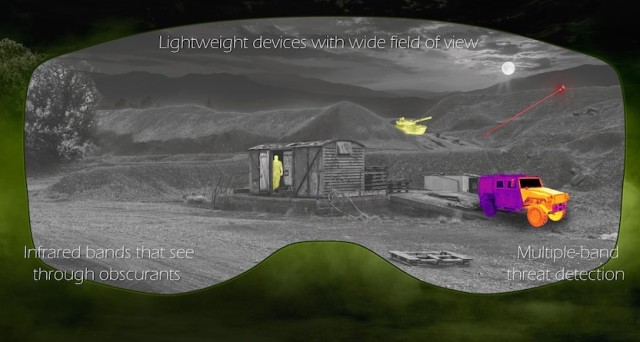The Defense Advanced Development Agency (DARPA) of the US Department of Defense has selected ten companies and research organizations that will develop lightweight and powerful night vision goggles. The military wants them to be closer in size and weight to ordinary glasses.
Today, the US military uses bulky and heavy night vision systems. For example, ENVG-B binoculars that weigh more than 11 kilograms. They restrict mobility, and if worn for a long time, they can cause chronic injuries. In addition, existing night vision devices have a narrow viewing angle, and they are limited to the near infrared range.
Last year, DARPA launched the ENVision program (Enhanced Night Vision in Eyeglass Form - Improved night vision in the form of glasses). Her task is to create lightweight night vision goggles with a wider viewing angle that would allow observation in different infrared spectra.
The military wants these glasses to help see not only in the dark, but also in fog, dust and smoke, and also to be thermal imaging. And at the same time, in size and weight, they could be closer to ordinary glasses.
In January, the Defense Advanced Development Agency announced that it had selected ten teams from companies and research organizations to participate in the ENVision program. The first group will create optics with a wide viewing angle and image amplifiers. Their task is to develop technologies that will significantly reduce the size and components of night video systems.
And the second one will study new methods of amplification of photonic up-conversion processes from any spectrum of the infrared range to visible light. This, in theory, can lead to the emergence of fully optical night vision systems that will not need image amplifiers.
Earlier we wrote about Microsoft augmented reality helmets, which the US army postponed military tests due to a problem with their wide viewing angle. It turned out that they slightly stretch and distort the image.
Vasilisa Chernyavtseva

